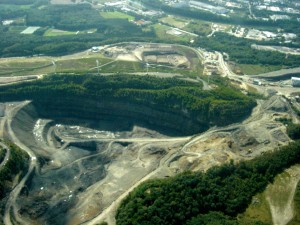TIAS Focus on Social Impact Assessment 2014-2015
Burning Questions
The Working Group on SIA
Further Resources on SIA
TIAS Focus on Social Impact Assessment 2014-2015
Social Impact Assessment (SIA) is recognised as a field of practice rather than a scientific discipline so that it is within the praxis, and not th e academic arena that most of the developments and advancements in SIA take place. Moreover, the business sector currently leads in advancing SIA.
e academic arena that most of the developments and advancements in SIA take place. Moreover, the business sector currently leads in advancing SIA.
With this in mind, The Integrated Assessment Society (TIAS) has adopted Social Impact Assessment (SIA) as one its themes this year in order to help enhance the effectiveness of its application and contribute to an improvement in the assessment methods, tools and indicators used. The basis for and breadth of our interest in promoting an improved SIA process is described in more detail in the feature article of the TIAS Newsletter of March 2014.
Burning Questions
Based on the experience of a number of TIAS members and the recent TIAS webinar, Enhancing SIA in May 2015, that involved scientiists and practitioners from various sectors interested in the topic, we have distilled from our discussions a number of open questions surrounding the application of SIA that we are interested in addressing:
1. What are the diverse goals of SIA in various contexts and the interests of the proponents behind this process?
2. In what ways can we further develop/strengthen methods for generating quantitative and therefore comparable data? (this is largely being covered by IAIA)
– Causal-loop diagramming for scoping – identification of key variables and disentangling multiple viewpoints and interests
– Perhaps the challenge to SIA is to provide a good underpinning to initiatives rather than shrinking the operational concept of social impacts to what can be quantified in good detail.
3. How are the formal consequences/results of SIA’s dealt with, in particular by large international organisations such as the World Bank and by governments. Does it mean that a project is on or off? What about accountability? In other words: how is the SIA formalized or institutionalized?
 4. Recognising that the social impacts of a project, policy or programme often begin when it is announced, how can the distributional implications (income, employment, etc) of a project be assessed through SIA?
4. Recognising that the social impacts of a project, policy or programme often begin when it is announced, how can the distributional implications (income, employment, etc) of a project be assessed through SIA?
5. How can we move beyond government-centric and compliance-only practices in SIA?
6. How can we connect the various discourses in social impact assessment?
7. What are the new developments in governance studies, particularly in the context of social transformation, that have significant implications for the way in which SIA is undertaken?
The Working Group on SIA
The working group was an informal one including members of TIAS who are interested in SIA for their work. The group refined and sought ways of addressing the above questions/themes.
Further Resources for SIA
- Vanclay, F. New Directions in Social Impact Assessment
- Becker, H and Vanclay, F. 2006. The international handbook of social impact assessment: Conceptual and methodological advances
- International Association for Impact Assessment
- Portal for the SIA Community of Practice
- SIA resources and references
- UNEP Training for Practitioners
